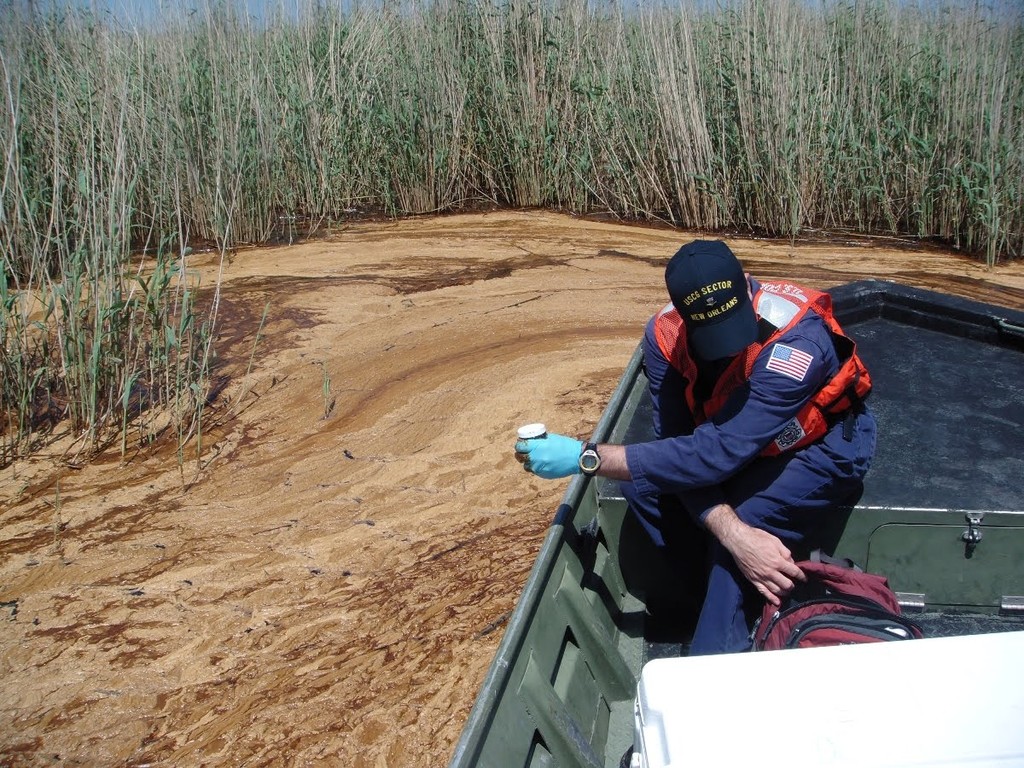BP report shares the blame
by Media Services on 13 Sep 2010

The Deepwater Horizon Unified Command estimate between 93.5 million and 184.3 million gallons of oil spilled into the Gulf of Mexico. MIAA
BP, facing billions of dollars in damages and penalties for causing the largest oil spill in US history, says its investigation shows other companies made mistakes that led to the Gulf of Mexico oil rig explosion.
According to its internal investigation and subsequent report, BP managers had direct involvement in just one of the eight judgment errors and equipment failures that led to the April 20 explosion aboard the Deepwater Horizon drilling rig. The explosion killed 11 workers and spewed crude oil into the Gulf of Mexico for almost three months.
The blame for the other mistakes rests primarily with rig owner Transocean Ltd., contractor Halliburton Co. and Weatherford International Ltd., which provided valves for the well, according to the 234-page report released yesterday after a probe by more than 50 BP engineers, geologists and hired investigators.
BP, which agreed in June to an Obama administration demand to set aside US$20 billion for claims, presented its findings last week to federal officials in Washington.
Transocean said BP’s report concealed Macondo’s 'fatally flawed' design, which 'set the stage' for the explosion. The Switzerland-based driller cited a series of cost-savings decisions by BP that added risk, including a design that cut the number of barriers to gas flow.
Transocean said its own probe is awaiting critical information that BP hasn’t yet provided.
The BP investigation team, led by Mark Bly, who oversees the company’s worldwide safety programs, analyzed pressure data from the rig on the night of the disaster that was transmitted to computers at BP’s Houston operations centre.
The data showed that explosive gas leaked into the Macondo well through cracks in cement near the bottom of the hole before surging up the pipe to the rig, Kent Corser, a BP drilling manager who participated in the probe, told officials in Washington.
Halliburton was responsible for ensuring the cement it poured around the side of the hole was solid enough to hold back gas and oil from the surrounding rock, the report showed. The Houston-based company failed to properly test the recipe it used in mixing cement for the bottom section of the well, or to detect faults that allowed gas to seep into the hole, Corser said.
Transocean, the world’s largest offshore oil driller, was faulted in the report for failing to notice signs a blowout was imminent in the minutes before disaster struck. BP’s well-site leaders aboard the rig shared in the blame because they misinterpreted pressure data from the well. The report identified them by job title only.
Transocean representatives erred by failing to realize gas and oil were rushing up the pipe until it was too late to halt the blowout. They also erred by diverting the flow to a piece of equipment that funneled gas onto the deck rather than over the side of the vessel, the report says. Various fire-safety and pressure-control devices under the control of Transocean crew members also failed to operate properly, BP said.
London-based BP plans to submit the report to a joint US Coast Guard-Interior Department investigative panel that is scheduled to hold public hearings on the catastrophe Oct 4 to 8 in Louisiana.
If you want to link to this article then please use this URL: www.sail-world.com/74603